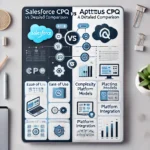Salesforce Lightning Scheduler is a dynamic tool designed to streamline and optimize appointment scheduling processes within Salesforce. With its robust features and seamless integration, Lightning Scheduler revolutionizes how businesses manage their appointments, resources, and customer interactions. In this comprehensive guide, we’ll delve into the various aspects of Salesforce Lightning Scheduler, its uses, benefits, and FAQs, empowering you to leverage its full potential.
What is Salesforce Lightning Scheduler?
Salesforce Lightning Scheduler is an advanced scheduling tool built on the Salesforce platform. It enables businesses to efficiently manage appointments, allocate resources, and optimize scheduling processes. By automating and centralizing appointment management, Lightning Scheduler enhances productivity, improves customer experience, and drives operational efficiency.
Key Features of Salesforce Lightning Scheduler:
- Appointment Booking: Lightning Scheduler allows customers to book appointments through various channels such as websites, portals, or directly within Salesforce.
- Resource Management: Businesses can efficiently allocate resources such as personnel, equipment, or facilities based on availability and skillset.
- Automated Reminders: Lightning Scheduler sends automated reminders to customers and staff, reducing no-shows and ensuring timely appointments.
- Calendar Integration: Seamlessly integrates with Salesforce calendars, Google Calendar, or Outlook Calendar, providing a unified view of all appointments.
- Customization: Offers extensive customization options to tailor scheduling workflows, appointment types, and booking rules according to business requirements.
- Reporting and Analytics: Provides insights into appointment metrics, resource utilization, and customer satisfaction, enabling data-driven decision-making.
Uses and Benefits of Salesforce Lightning Scheduler:
- Enhanced Customer Experience: Lightning Scheduler offers convenient appointment booking options and personalized experiences, enhancing customer satisfaction and loyalty.
- Optimized Resource Utilization: By efficiently allocating resources and managing schedules, businesses can optimize resource utilization, minimize downtime, and maximize productivity.
- Streamlined Operations: Automating appointment scheduling and management processes streamlines operations, reduces manual effort, and improves overall efficiency.
- Improved Visibility and Control: Lightning Scheduler provides real-time visibility into appointment schedules, resource availability, and performance metrics, empowering businesses with greater control and agility.
- Scalability: Scalable architecture allows Lightning Scheduler to cater to the needs of businesses of all sizes, from small enterprises to large corporations.
- Integration Capabilities: Seamless integration with other Salesforce products and third-party applications extends functionality and enhances overall business processes.
How to enable lightning scheduler salesforce
FAQs (Frequently Asked Questions):
- Is Salesforce Lightning Scheduler suitable for my business?
- Lightning Scheduler is ideal for businesses across various industries that rely on appointment-based interactions with customers or clients. Whether you’re in healthcare, retail, professional services, or field service management, Lightning Scheduler can streamline your appointment scheduling processes.
- How easy is it to implement Salesforce Lightning Scheduler?
- Implementation of Lightning Scheduler depends on factors such as your existing Salesforce setup, customization requirements, and integration needs. Salesforce provides comprehensive documentation, training resources, and support services to facilitate smooth implementation and adoption.
- Can I customize scheduling workflows and appointment types?
- Yes, Salesforce Lightning Scheduler offers extensive customization options, allowing businesses to tailor scheduling workflows, appointment types, booking rules, and user interfaces according to their specific needs and preferences.
- Does Salesforce Lightning Scheduler integrate with other applications?
- Yes, Lightning Scheduler seamlessly integrates with other Salesforce products such as Sales Cloud, Service Cloud, and Marketing Cloud, as well as third-party applications through APIs and AppExchange extensions.
- How does Lightning Scheduler handle cancellations and rescheduling of appointments?
- Lightning Scheduler provides flexible options for managing cancellations and rescheduling of appointments. Businesses can configure rules and notifications to handle changes efficiently while minimizing disruptions to schedules.
Conclusion:
Salesforce Lightning Scheduler empowers businesses to revolutionize their appointment scheduling processes, driving efficiency, productivity, and customer satisfaction. By leveraging its advanced features, customization options, and seamless integration capabilities, organizations can optimize resource utilization, streamline operations, and stay ahead in today’s competitive landscape.
External Links:
- Salesforce Lightning Scheduler Overview: Salesforce Lightning Scheduler
- Salesforce Lightning Scheduler Documentation: Salesforce Documentation


